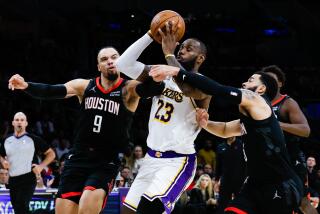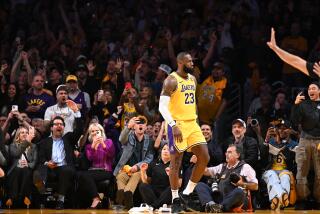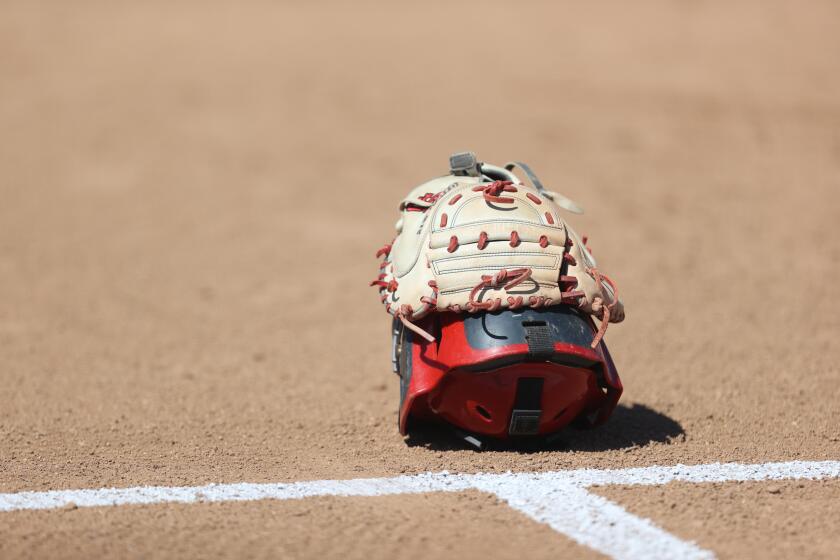There’s been a big gain in pain this season
Everybody hurts.
—R.E.M.
It’s a day-to-day existence for a legion of NBA millionaires.
Knees are sore, ankles are sprained, hamstrings are achy . . . and that’s just the Milwaukee Bucks.
The list of injuries from this shortened season has an unabridged feel. You couldn’t cast an All-Star ballot or embark on a most-valuable-player debate without touching upon at least a few players who have missed games.
Derrick Rose (toe, back), Dwyane Wade (ankle), Chris Paul (hamstring), Dirk Nowitzki (knee), Manu Ginobili (hand, rib) and Carmelo Anthony (groin) have all been sidelined by one ailment or another.
Several players have gone down, come back and then gone down again.
New Jersey center Brook Lopez sat out the season’s first 32 games with a broken right foot, only to be lost again five games into his return after spraining his right ankle March 4, sidelining him for another three weeks.
At least he got to give it a second shot.
Atlanta’s Al Horford is likely out until at least the playoffs because of a torn chest muscle. The Clippers’ Chauncey Billups was lost for the season because of a torn Achilles’ tendon, distressing his teammates almost as much as the five-time All-Star.
Indeed, it seems the only four words heard these days in NBA arenas more often than “O! say can you . . .” are “questionable,” “probable,” “doubtful” and “out.”
That’s what the NBA and its players have wrought following the five-month lockout that resulted in shortened training camps and a relentless schedule of game after game after game.
According to statistics compiled by the NBA, the number of one-game injury absences over the season’s first 60 days was up to 57 from 35 over the same period a year ago, an increase of 62.9%. Total resolved injuries, in which players have returned from their injuries regardless of length, were up to 152 from 133, an increase of 14.3%.
It doesn’t take a Caltech math major to figure out that more games in fewer days will likely trigger an uptick in injuries.
“We’re playing eight games every two weeks rather than seven,” said Joel Litvin, the NBA’s president of league operations. “We have situations where players are missing games due to injuries where they wouldn’t have missed the game last year because last year they suffered a minor injury [and] had an off day to recuperate and be ready to play the following night.
“This year, we have more situations where the next day is a game day, so the coach, being cautious, or the medical staff, being cautious, decides to sit the player rather than play him.”
Not all of the injury news is painful.
Injuries to top players, defined as those who have appeared in an All-Star game at least once in the previous two years, are down to 26 from 30, a decrease of 13.3%. You can largely thank Kobe Bryant, playing through everything short of a staph infection, for that.
Serious injuries are down too. Through the first 60 days, the number of players sidelined at least 20 days this season by an injury had fallen to 19 from 21, a decrease of 9.5%.
Of course, that’s no consolation to the Minnesota Timberwolves, who lost rookie point guard Ricky Rubio for the season after he suffered a torn knee ligament Friday night. Nor is it any solace to the Memphis Grizzlies, who have been without power forward Zach Randolph since Jan. 2 because of a torn knee ligament.
The NBA has tried to soften the injury blow by allowing every team to suit up one extra player, increasing active rosters from 12 to 13.
There has also been a concerted effort by coaches to use reserves more liberally. According to figures released by the NBA, teams’ top six players (in terms of minutes played) are averaging a combined 4.3 minutes fewer per game this season than last, while players seven to nine are averaging 2.1 minutes more per game and players 10 to 13 are averaging 5.6 minutes more.
The league stubbed its own toe over the summer, however, by refusing to let players have access to trainers or team medical facilities during the lockout.
“That was a major problem, not being able to come here and get treatment,” said the Lakers’ Metta World Peace, who was recovering from an Achilles’ tendon injury sustained in last year’s playoffs. “Not being able to speak to [trainer] Gary Vitti, that was the worst part of the lockout.”
The lack of access probably contributed to Paul’s early season hamstring issues and Nowitzki’s balky knee, which forced the Mavericks forward to sit out four games in January while he improved his conditioning.
Vitti said he has advised players to come in early each day for warmups and flexibility exercises to prepare their bodies for the grind of a lockout-shortened season. The trainer has also stressed rest and recovery during a stretch in which his team will play 66 games in 124 days.
“I cannot say we’ve had injuries due to the lockout,” Vitti said. “The issues we’ve had have been traumatic as opposed to overuse, but overuse injuries are an attrition of activity. With that in mind, we’re not out of the woods until our last game.”
Just like everybody else.
More to Read
Get our high school sports newsletter
Prep Rally is devoted to the SoCal high school sports experience, bringing you scores, stories and a behind-the-scenes look at what makes prep sports so popular.
You may occasionally receive promotional content from the Los Angeles Times.







